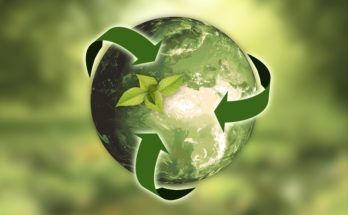Climate change slower the fight against global poverty because poor people tend to live in the most vulnerable locations and lack resources to adapt. For example, the river deltas of Bangladesh and Burma are densely populated by poor households increasingly exposed to cyclones and tidal surges. In sub-Saharan Africa, populations are mainly rural, dependent on rain-fed agriculture for subsistence and employments. Poor families are badly prepared to act in response to changing rainfall patterns and the shorter growing season caused by warmer environment. Strategies for achieving UN targets for global poverty reduction is known as the Millennium Development Goals (MDGs), are therefore being stabbed in the back by climate change. The International Food Policy Research Institute has predictable that, by 2050, the special effects of climate change on agriculture will add 25 million children to the total of those suffering from malnutrition. Extreme weather affects agricultural productivity and can raise the price of fastener foods, such as grains, that are significant to poor households in developing countries.
Global warming will likely raise the intensity and frequency of heat influence, drought and floods in many areas. It is significant to understand which socioeconomic groups and countries could see changes in poverty rates in order to make well-versed policy decisions.
Even though urban workers only donate modestly to total poverty rates in the model countries, they are the most susceptible group to changes in grains production. Food is a major outlay for the poor and while those who work in agriculture would have some benefit from higher grains prices, the urban poor would only get the pessimistic effects. With nearly 1 billion of the world’s poor living on less than $1 a day, extreme events can have a overwhelming impact, Bangladesh, Mexico and Zambia have the greatest percentage of the population entering poverty in the rouse of tremendous drought, with an supplementary 1.4 percent, 1.8 percent and 4.6 percent of their populations being impoverished by future climate extremes. The rate and extent of what are at this time the 30-year-maximum values for wet, dry and hot extremes are projected to considerably increase for much of the world. Heat waves and drought in the Mediterranean showed a possible 2700 percent and 800 percent increases in occurrence in that order, and extreme rainfall in Southeast Asia was predictable to potentially increase by 900 percent. Additionally, Southeast Asia showed a projected 40 percent raise in the magnitude of the worst rainfall; central Africa showed a projected 1000 percent increase in the scale of the most horrible heat wave; and the Mediterranean showed a projected 60 percent increase in the most horrible drought. In a study, a statistical analysis was used to conclude grain productivity stuns that would keep up a correspondence in magnitude to the climate extremes, and then the economic impact of the supply shock was established. Future forecast extreme climate events were evaluated to historical agricultural productivity extremes in order to evaluate the likely impact on agricultural production, prices and earnings. Only the extreme drought events were incorporated into the economic projections, making the poverty impacts a conservative estimate.
To evaluate the potential economic impact of a given alter in wages and grains prices, country’s household survey were conducted. Great reductions in grains productivity due to extreme climate occurrence are supported by past data. In 1991 grains productivity in Malawi and Zambia turn downed by about 50 percent when southern Africa experienced a cruel drought.
According to the World Watch Institute, the world’s richest 500 million people or roughly 7% of the population are now liable for 50% of carbon dioxide emissions at the same time as the poorest 3 billion are responsible for just 6%. In the period 1900-2004, the whole of Africa generated 2.5% of increasing carbon dioxide emissions whilst the US accounted for 29.5%. Even though these gaps are narrowing, historic emanations are relevant because carbon dioxide remains in the atmosphere to put forth a greenhouse effect for many decades.
The perception of climate justice looks for to restore equity in two ways. Richer countries should pay off their climate debt by undertaking harsh cuts in emissions, reserving “atmospheric space” for the growing emissions of poorer countries. They should afford financial support for low carbon transition and adaptation to the damaging effects of climate change.
Melting of ice caps results in sea level increase which affects the communities living in and near coastal areas by displacing their place to live and obliteration of agricultural lands, depending on flood intensity the whole area or land is reduced etc. Poor countries are exaggerated most by climate change as industries depending upon agriculture destroying.
Climate change has been persuaded to primarily focus on alleviation of greenhouse gas emissions. This is significant for those countries responsible for most of the world’s greenhouse gas emissions, most developing countries can do enhanced in preparing to adapt to today’s climate inconsistency and long-term climate change. The anxiety raised in the context of the climate change debate simply reinforces the importance to address the original problems facing poor people. This means bracing the pledge to perk up the health of poor people (especially through the stipulation of water and sanitation), taking measures to diminish the collision of natural disasters through suitable infrastructure planning, and more generally helping poor people through sound agricultural, land use, labor market, environmental, and macroeconomic policies to reduce and manage risk.



